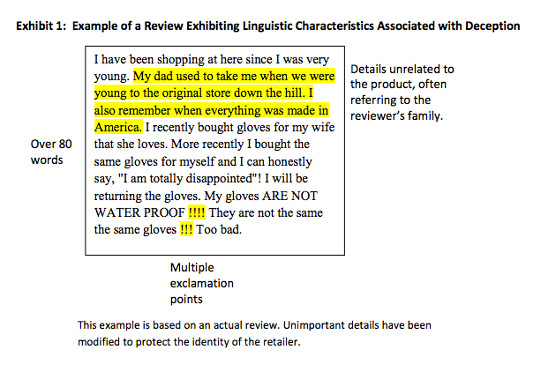
After posting about Wired Love last night — the novel about two telegraph officers who strike up a remote relationship — I got an email from the artist Silvia Ruzanka. It turns out she’s create a couple of pieces based on the novel! The one above is an installation called “Sounder and Relay”, which Silvia describes thusly:
Sounder and Relay is a meditation on online romance in the age of the telegraph. Two video projections show computer-generated figures in Victorian interiors. As the two tap messages on their telegraphs, the signals are transmitted across the room through physical antique telegraph equipment. The text is composed of dialogue excerpts from the novel Wired Love: A Romance in Dots and Dashes.
I wish I knew Morse code so I could figure out what passages of the book they’re transmitting in this piece!
I saw this in a used-book sale in the Upper West Side of Manhattan.

In the Victorian era, telegraph operators were the first people to live with virtual reality.
Here’s how the 1880 novel Wired Love: A Romance of Dots and Dashes — the story of Nattie Rogers, a young telegraph operator — begins:
Miss Nattie Rogers, telegraph operator, lived, as it were, in two worlds. The one her office, dingy and curtailed as to proportions, but from whence she could wander away through the medium of that slender telegraph wire, on a sort of electric wings, to distant cities and towns; where, although alone all day, she did not lack social intercourse, and where she could amuse herself if she chose, by listening to and speculating upon the many messages of joy or of sorrow, of business and of pleasure, constantly going over the wire. But the other world in which Miss Rogers lived was very different; the world bounded by the four walls of a back room at Miss Betsey Kling’s. It must be confessed that there are more pleasing views than sheds in greater or less degrees of dilapidation, a sickly grape-vine, a line of flapping sheets, an overflowing ash barrel; sweeter sounds than the dulcet notes of old rag-men, the serenades of musical cats, or the strains of a cornet played upon at intervals from nine P. M. to twelve, with the evident purpose of exhausting superfluous air in the performer’s lungs.
The sky above the port was the color of television, tuned to a dead channel. People, you have no idea how much fun this book is. And it’s free to read! Right here!
I don’t want to give too much of the plot away — I save my spoilers for below the jump. But the story, in brief, is that Nattie is at work one day when a telegraph operator in another city, who calls himself “C”, begins chatting her up. They engage in a virtual courtship, things get funny and romantic, until suddenly things take a most puzzling and mysterious turn.
It’s all quite nuttily modern. Wired Love anticipates everything we live with in today’s online, Iphoned courtship: Assessing whether someone you’ve met online is what they say they are; the misunderstandings of tone and substance that come from communicating in rapid-fire, conversational bursts of text; or even the fact that you might not really be sure of the gender/nationality/species of the person you’re flirting with.
As it turns out, Nattie quickly figures out that “C” is, indeed, a man. But the conversations she and her friends have about her online courtship are utterly wild to read: They have the arch elocutions of Victorian-era America, mixed with concepts that are so thoroughly modern that book feels like it was written this year, by someone merely emulating the language of 1880. Dig this passage, which begins with Nattie talking:
“You remember my speaking about ‘C’ and wondering whether a gentleman or lady?”
“Oh, yes!” Quimby remembered, and fidgeted on his chair.
“He proved to be a gentleman.”
“Oh, yes; exactly, you know!” responded Quimby, looking anything but elated.
“It must be very romantic and fascinating to talk with some one so far away, a mysterious stranger too, that one has never seen,” Miss Archer said, her black eyes sparkling. “I should get up a nice little sentimental affair immediately, I know I should, there is something so nice about anything with a mystery to it.”
“Yes, telegraphy has its romantic side—it would be dreadfully dull if it did not,” Nattie answered.
“But—now really,” said Quimby, who sat on the extreme edge of the chair, with his feet some two yards apart from each other; “really, you know, now suppose—just suppose, your mysterious invisible shouldn’t be—just what you think, you know. You see, I remember one or two young men in telegraph offices, whose collars and cuffs are always soiled, you know!”
“I have great faith in my ‘C,’” laughed Nattie.
“It would be dreadfully unromantic to fall in love with a soiled invisible, wouldn’t it,” said Miss Archer, with an expressive shrug of her shoulders.
A “soiled invisible”? I want to see an entry for that in the Urban Dictionary by tomorrow.
I’m not going to spoil the book any more, because frankly you all should go and read it right now. It’s short, a blast, and you can rip through it in an evening. (Copies in various formats are all free here via Project Gutenberg; you can see a typeset copy via Google Books. I was reminded of Wired Love just now because I read a smart article pointing out how Google Books has rekindled an interest in 19th century literature, because it’s all out of copyright, scanned, and suddenly super-accessible. I’ve read a ton of 19th century lit in the last few years for precisely that reason.)
Okay, now for some spoilers. A few of the absolutely surreal moments in this book include …

By now, it’s pretty obvious that there is lots of fakery in online reviews. Most of the time, I assume the faking skews positive: i.e. a manufacturer Turks a bunch of people to write glowing assessments of their widget on Amazon; an author goes all sprezzatura and pens delirious self-praise via a network of sock puppets.
But it turns out there are also faked bad reviews — people who trashtalk a product even though they haven’t actually used it or bought it themselves.
Better yet — it’s possible to recognize faked bad reviews. According to a fascinating study recently released, faked bad reviews carry several linguistic markers of their fakeitude: They’re vaguely worded, longer than other reviews, and have lots of exclamation points!!!!
If you’re in a hurry and wanna read the bullet-pointed takeaways, skip down to the middle of this entry.
But for those of you awesome people who love to read about clever data-collection protocols, here’s some background on the study. It opens with an interesting question: How do you analyze faked bad reviews?
Well, for starters, you have to collect a bunch of them. In other words, you have to gather up a bunch of negative reviews written by people who you know didn’t buy the product. Eric Anderson of Northwestern University and Duncan Simester of MIT hit upon an elegant way to accomplish this. They got the co-operation of an online brand (unnamed) that sells its products direct to customers — via stores and online — and, what’s more, only sells them direct; it doesn’t sell via any other channels, like big chains. With this brand, either you buy from them directly or you don’t buy it at all.
Now, this brand also carefully tracks its online customers. You need to register to purchase something from the web site, so the brand knows precisely what every online customer has and hasn’t bought. Crucially, the brand also links its customers’ in-store purchases to their online purchasing identities, so the company knows what each customer has bought both in meatspace and on the intertubes. What’s more, to review something on the site you have to be signed in — there are no anonymous reviews. The brand knows precisely who wrote what.
With this info, the researchers could isolate the “faked” bad reviews on the site — i.e. the situations in which a customer reviewed a product that they manifestly had bought neither online nor (with reasonable certainty) offline. Anderson and Simester found 15,759 such reviews. Interestingly, these reviews were not written by drive-by cranks who signed up for the site just to post trash talk. No, the fake bad reviews were written by avid customers — people who had, in the past, bought plenty of items from the brand. But in this case they’d for some reason reviewed an item without having bought it.
When the researchers analyzed the language traits of these faked negative reviews, several trends things emerged. The differences between faked and non-faked bad reviews aren’t huge, but they’re consistent. Here’s my redaction of the big ones the researchers found:
- They’re long. “Perhaps the strongest cue associated with deception is the number of words: deceptive messages tend to be longer” — about 36%, on average. Fake ones were on average 70.13 words long; authentic negative reviews were only 52 words. Why is this? Because, as psychologists have long documented, it’s harder to craft a lie than to tell the truth.
- They’re vague. Since the reviewers here are assessing goods they haven’t actually touched or felt, “these reviews are significantly less likely to include descriptions of the fit or feel of the garments, which can generally only be evaluated through physical inspection.”
- They contain irrelevant details. Fake reviewers were more likely to fill up their prose with seemingly off-point discussions of stuff not germane to the product — such as mentions of their family. “They are also more likely to contain details unrelated to the product (‘I also remember when everything was made in America’) and these details often mention the reviewer’s family (‘My dad used to take me when we were young to the original store down the hill’).”
- And my personal favorite mark of inauthenticity: “multiple exclamation points.”
Now, there are plenty of caveats with this study. It’s possible that some of the reviews weren’t actually fake. Maybe the reviewer got ahold of the product in some fashion outside the detectable stream of purchases, such as in a gift or Ebay; or maybe the brand’s system of tying the physical-store purchases to online purchases isn’t complete enough. The researchers claim they’ve ruled these out as best as possible, and while they were clearly quite careful, there’s always room for error. It’s not published and peer-reviewed work.
Nonetheless, if you grant the force of this analysis, it leads to a fun question Why do customers write fake negative reviews?
Again, these aren’t just a bunch of randos who hate the brand and are just doing it for the lulz. On the contrary, they’re loyal customers: Anderson and Simester found that writers of fake negative reviews continue to buy lots of products from the brand — indeed, slightly moreso than people who don’t write fake negative reviews. The researchers offer a different hypothesis:
The explanation that is most consistent with the data is that these are loyal customers acting as self-appointed brand managers. The review process provides a convenient mechanism for them to give feedback to the firm … They are loyal to the brand and want an avenue to provide feedback to the company about how to improve its products. They will even do so on products they have not purchased.
Evidence of this? Fake reviews are three times more likely than non-fake reviews to use language that indicates they’re talking to the company directly. In a “real” review, the author writes phrases like “if you are looking,” “if you need,” or “if you want”. In other words, they’re addressing other customers. But the faked reviews used phrases like “bring back,” “offer more,” or “carry more”. They were writing for an audience of the company — using the negative review to hector/lecture the brand directly.
It’s pretty fascinating stuff. It’s going to get me to look twice at negative reviews now.
The full paper — “Deceptive Reviews: The Influential Tail” — is here.

Remember the wreck of the Costa Concordia? The captain ran the ship aground off the Italian island of Giglio, and then was accused of abandoning the vessel before ensuring his passengers got off safely. (They didn’t; tragically, 32 died.) I was recently reading a story in the New York Times about the captain’s court trial and saw photos of the ship, which is still sitting there, lying on its side in the shallow waters off Giglio.
I remember, back when the catastrophe first occurred, being struck by how uncanny — how almost CGI-like — the pictures of the ship appeared. It looks so wrong, lying there sideways in the shallow waters, that I had a sort of odd, disassociative moment that occurs to me with uncomfortable regularity these days: The picture looks like something I’ve seen in a some dystopic video game, a sort of bleak matte-painting backdrop of the world gone wrong. (In the typically bifurcated moral nature of media, you could regard this either as a condemnation of video games — i.e. they’ve trained me to view real-life tragedy as unreal — or an example of their imaginative force: They’re a place you regularly encounter depictions of the terrible.) At any rate, I think what triggers this is the sheer immensity of the ship; it’s totally out of scale, as in that photo above, taken by Luca Di Ciaccio.
But the huge size of the ship made me wonder something else. Is the accident this enormous visible on Google Maps?
Sure enough, it is. Here’s the ship as seen in satellite view:

Click here and it’ll take you directly to the precise location on Google Maps. Zoom in and out and check it out. It’s an even more uncanny feeling. One is accustomed to seeing manmade objects via the satellite view in Google Maps; heck, I’ve seen my own house. But one isn’t as accustomed to seeing things that are manmade but aren’t supposed to be there — or at least not in such a wounded, collapsed condition. When I first started looking for the wreck I didn’t know exactly where I was, so I found the town of Giglio, moved over to the water, zoomed in pretty tightly, and began scrolling up the coast. I worried I wasn’t zoomed in close enough to find the ship; it’s difficult to judge precisely how close you are to the ground when you’re doing satellite view. But it turned out I was plenty close, because when I finally found the ship the nose jutted into view so enormously it almost filled my entire screen, and I actually yelped in surprise.
Now I’m wondering: What other accidents are visible in satellite view? Are there any similar catastrophes — collapses, capsizings, etc. — that are out there? Since Google updates its satellite view with some regularity, and since most of these really big accidents take months or years to clean up, there must be tons.
(That terrific photo above is, as noted, by Luca Di Ciaccio and licensed under Creative Commons.)

That radio above is the Cambridge Soundworks HD Radio 820HD, a high-end clock-radio from 2007. Today, I got an email from James Grimmer, a reader who responded to my column on the fixer movement with a great story of fixing his 820HD. The manufacturer had abandoned the device, it hadn’t been designed to be disassembled in the first place — but when Grimmer got the radio open, all it needed were some a few cheap fixes.
If devices like this were designed to be easily opened, it’d be a lot easier to fix them. Forthwith:
Amen to your article on The Fixer’s Movement. When I was a kid, my dad taught me how to fix just about anything. His motto was, “It’s already broken, so you have nothing to lose because a repair shop will charge you more than it’s worth to fix it.” I’ve been fixing my friends’ and our electronics, appliances, plumbing, wiring, (to be fair, I should admit I apprenticed as a plumber and worked with skilled electricians and carpenters who taught me a lot) for a long time now, and have rarely been stymied, although I had one experience that sums up much of what you said in the article. A few years ago, I bought the highly touted Cambridge HD820 radio. It had great sound for such a small box, and HD radio doubled the kind of programming I liked. After two years, it failed—weak signal and constant buzzing regardless of volume level. I guessed power supply and possibly antenna, but was completely stymied on how to get the radio disassembled—it was entirely sealed with no discernible entry points. I called Cambridge, and they answered that they had no repair service nor any service manual, and that they had discontinued the model (that had been jobbed out to a Korean manufacturer). They simply offered no help or advice at all. I found the manufacturer and got nearly the same story there, but the operator who answered remembered that the disassembly bolts were concealed underneath the metal grills (that were glued to the face of the speakers.) She said I’d have to destroy the grills to get inside the cabinet. It turned out I didn’t have to—I took my long Rapala filet knife and carefully sliced underneath the grills’ covers. Got to what turned out to be 18 disassembly bolts and screws. Once I could see the boards, it was obvious that everything had been hot-glued into place, so it took another hour to free up the boards without cracking them. Then I could see the bad connection on the antenna—easy fix. I could also see where the buzz came from—two visibly expanding capacitors in the power supply—another easy fix. Now it works great, and it has been assembled far more sensibly for repair. Why couldn’t they have designed it that way in the first place? How much do I desire to deal with Cambridge again (no hope for service two years after purchase)?
I’d add that those capacitors have been a haunting feature of about half the items I’ve repaired for people lately, especially in cheap DVD players and boom boxes. More than a few of those blown capacitors were 16 volt in circuits that called for 35 volt capacitors. I can’t believe an EE would mistakenly do that, so either the marketing people OK’d the slightly cheaper 16 volters to increase profits by 5 cents, or the EE’s were instructed to use capacitors that would kill the player within two years.
Another bugaboo is cheap switches and relays on appliances. Our dryer failed, and a repair shop quoted over $100 for a fix. I just took my VOM and ran through the circuit, found a faulty microswitch, learned that the manufacturer wanted $40 for it on its website, and then found the same switch in an online parts bin for $7. They had also, interestingly, installed the switch with machine screws from the back side of the drum, so it took a small offset Phillips screwdriver to get them out. When I reinstalled the switch, I drilled the threads out of the hole and installed small bolts and nuts to make further replacements easy. Was someone at the manufacturer deliberately making that switch so hard to get at (unless one happens to have small offset screwdriver) that most people would think a repairman was necessary?
On a larger, older scale, our house was built in 1957. The main plumbing stack cleanout in the basement was done with a straight Tee facing a wall that was very near the wall. Opening that cleanout and getting a big snake through it was a real knuckle-busting, acrobatic act. That design made sense in no way whatsoever. Not even our sewer guy liked dealing with that location. First, why not locate it facing out? Second, why not a sanitary Tee? Third, how did inspectors let that pass? (This was the same crew, I should add, who allowed cast iron to be connected to clay pipe with mortar. Guess how long it took for roots to break through that mortar? Our whole neighborhood has been dug up to correct that deficiency. I took out the stack, replaced it with ABS, and installed a sanitary Tee cleanout—not an easy fix.
Would legislation help? I don’t know. It may be that consumer magazines like yours and consumer websites and rating services have more influence without the time, expense, and corruption of a set of laws that manufacturers would figure out how to avoid. These companies do, however, have a terrible time finding their way around criticisms in popular media.

In Brooklyn where I live, the mosquitos are brutal in the summer. I’ve tried everything to fight them: Mosquito-repellent candles, bug zappers, those vaguely snake-oilian machines that use propane to try and trap insects. None of it worked. I’d resigned myself to simply never sitting in my backyard or front stoop for the months of July or August.
Then I read a clever solution in yesterday’s New York Times: An oscillating fan.
If you set an oscillating fan near where you’re sitting, it prevents mosquitos from clustering. Why? An incredibly simple reason: They’re not strong enough to fight against the wind. The author of the article, William Broad, discovered this nifty hack while visiting with some friends. They set out a fan, nobody got bit, and Broad, amazed, asked them: Where had the idea come from?
As we left, I asked our hosts about the fan idea; they credited a mutual friend at the barbecue. He, in turn, paid tribute to a friend of his: Frank Swift, president of Swift Food Equipment Inc. in Philadelphia.
So I reached out to Mr. Swift, who replied by e-mail. “The solution came from trying to think like a bug,” he explained, “and realizing I don’t like flying into a 15 m.p.h. wind.”
I love it: He imagined himself in the position of the mosquito. This is not something we’re often told to do when brainstorming a solution to a problem. Sure, we’re frequently told that it’s important to empathize with the humans; they’re the reason the problem is being solved, right? But we’re rarely told that a crucial imaginative task, a critical bit of cognition, is to put ourselves in the position of a nonhuman thing, and see the world from that perspective.
Yet the thing is, the world is awfully interesting when you view it from the perspective of inanimate objects. Albert Einstein began developing his deep insights into the nature of space and time when, at the age of 16, he imagined himself riding a beam of light: Seeing the world from the viewpoint of light, as it were. In 1905, when wrestling with the apparent paradoxes of physics that are introduced by the speed of light being constant and unsurpassable, he looked up at the clock tower in Bern and again imagined the perspective of light racing away from the tower. Boom: In a flash, he envisioned the answer. He realized the clock would appear stopped, because the light from the tower could never catch up to a beam of light that was racing away from it. As Michio Kaku writes:
Then suddenly it hit him, the key to the entire problem. Einstein recalled, “A storm broke loose in my mind.” The answer was simple and elegant: time can beat at different rates throughout the universe, depending on how fast you moved.
Think like light, think like a mosquito. This idea — how does our world appear to things around us — isn’t an entirely new idea, obviously; it’s part of Bruno Latour’s actor-network theory. My personal favorite exploration of it is Ian Bogost’s fun, recent book Alien Phenomenology, Or What It’s Like To Be a Thing.
Anyway, now I vow to start approaching problems by imagining the mental state of the inanimate objects involved.
(As Broad notes, apparently the mosquito-fan idea is a venerable piece of folk wisdom, so I guess people have been successfully thinking like bugs for some time.)
I'm Clive Thompson, the author of Smarter Than You Think: How Technology is Changing Our Minds for the Better (Penguin Press). You can order the book now at Amazon, Barnes and Noble, Powells, Indiebound, or through your local bookstore! I'm also a contributing writer for the New York Times Magazine and a columnist for Wired magazine. Email is here or ping me via the antiquated form of AOL IM (pomeranian99).

ECHO
Erik Weissengruber
Vespaboy
Terri Senft
Tom Igoe
El Rey Del Art
Morgan Noel
Maura Johnston
Cori Eckert
Heather Gold
Andrew Hearst
Chris Allbritton
Bret Dawson
Michele Tepper
Sharyn November
Gail Jaitin
Barnaby Marshall
Frankly, I'd Rather Not
The Shifted Librarian
Ryan Bigge
Nick Denton
Howard Sherman's Nuggets
Serial Deviant
Ellen McDermott
Jeff Liu
Marc Kelsey
Chris Shieh
Iron Monkey
Diversions
Rob Toole
Donut Rock City
Ross Judson
Idle Words
J-Walk Blog
The Antic Muse
Tribblescape
Little Things
Jeff Heer
Abstract Dynamics
Snark Market
Plastic Bag
Sensory Impact
Incoming Signals
MemeFirst
MemoryCard
Majikthise
Ludonauts
Boing Boing
Slashdot
Atrios
Smart Mobs
Plastic
Ludology.org
The Feature
Gizmodo
game girl
Mindjack
Techdirt Wireless News
Corante Gaming blog
Corante Social Software blog
ECHO
SciTech Daily
Arts and Letters Daily
Textually.org
BlogPulse
Robots.net
Alan Reiter's Wireless Data Weblog
Brad DeLong
Viral Marketing Blog
Gameblogs
Slashdot Games